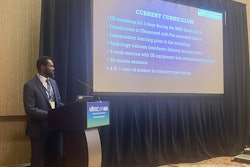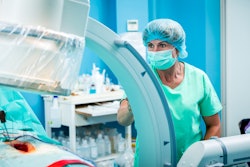Virtual interviews implemented in the U.S. due to the COVID-19 pandemic do not appear to have shifted the geographic distribution of interventional and diagnostic radiology residents, says a group at NYU Langone Health in New York City.
The finding had one exception -- the South -- but overall the study offers insights into changes that virtual interviewing has had on match statistics and may further inform recruiting efforts, noted medical student and lead author Younes Attlassy.
“Overall, the shift to virtual residency interviews did not significantly affect whether [interventional radiology] or [diagnostic radiology] applicants tended to match at programs close to or far away from their medical schools,” the group wrote. The study was published March 21 in Academic Radiology.
In 2020, the COVID-19 pandemic required residency programs to upend well-established interview processes. Prior to the pandemic, it was well documented that residency location played a crucial role in program selection by applicants during the match process, according to the authors.
With scant research performed on the topic, the authors aimed to characterize the effects of virtual interviews on residency matches. They compared the geographic distribution of 3,115 interventional and diagnostic radiology residents who matched at 102 programs before and after (2017 to 2021) the initiation of virtual interviews.
According to the analysis, 49% of interventional and 56% of diagnostic radiology residents matched in the same geographic region as their medical school. Virtual interviews did not increase the odds of matching in the same region as one’s medical school for interventional (odds ratio [OR] 1.11, p = 0.08) or diagnostic radiology (OR 1.01, p = 0.58) applicants, the authors reported.
However, the distribution of applicants who matched at Southern IR residency programs was an exception. The proportion of Southern interventional radiology residents who came from Southern medical schools fell sharply from 62.2% to 9.1%, according to the findings.
“The increase in applicant diversity after the implementation of virtual interviews suggests that the virtual interview process allowed Southern IR programs to interact with and potentially attract a greater regional diversity of applicants,” the group wrote.
Ultimately, both diagnostic radiology (DR) and IR programs have maintained a relatively stable relationship with medical students from their affiliated undergraduate medical institutions, with between 10% and 20% of DR and IR applicants remaining at their home institution before and after the transition to virtual interviews, the researchers wrote.
This trend likely stems from enhanced familiarity, rapport-building opportunities, and risk mitigation by applicants and programs alike, they wrote.
The full study can be found here.



















